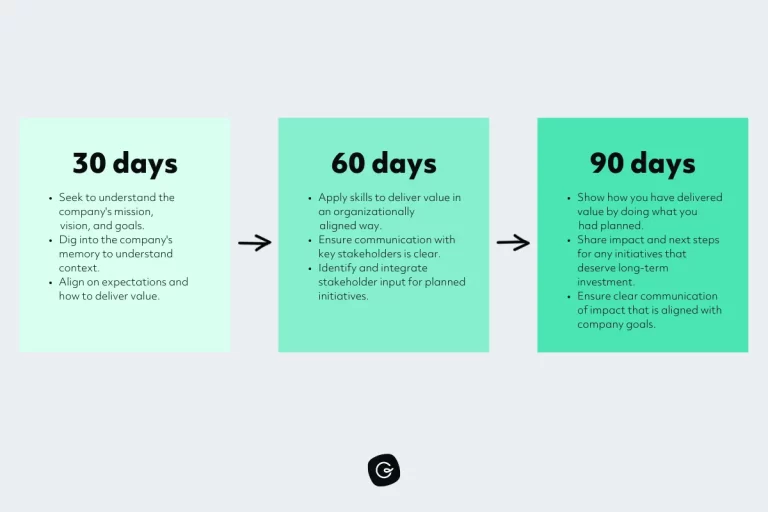Skills for Exceptional Program Management
In complex arena of program management, I’ve discovered that success is often a result of a delicate balance between technical acumen and soft skills. To excel, TPMs must balance a broad spectrum of responsibilities, from overseeing project lifecycles to navigating team dynamics. Allow me to share my stories, filled with practical examples, that illustrates how I’ve honed these essential skills in the trenches of real-world application.
Leadership and Strategic Thinking
As a leader, you should not only manage but also inspire your team. Let’s say your team achieved a milestone; celebrate this success to boost morale and encourage continued effort towards the project goals. Furthermore, aligning your projects with the broader business strategy is crucial. This could mean prioritizing certain features of a software project that align with the company’s strategic push into a new market.
Case in Point: Leadership within program management isn’t just about guiding teams; it’s about steering them through a sea of uncertainty with confidence and vision.
A defining moment for me was during new product introduction of the 5G new radio. There is a lot of ambiguity due to unclear customer requirements, technical standards and specification in progress, software features and hardware design in parallel. During this time it is important to lead by being proactive with various stakeholders, and pull together the overall picture.
During the uncertainty, I collaborated with the various stakeholders to develop a strategic plan to drive towards success. This includes defining the tasks, the schedules, dependencies, risks, mitigation, and actions plans to achieve towards deliverable goals.
More specifically, I took the initiatives on the following actions.
- I organized meeting with product manager to detailed out the roadmap.
- I collaborated with solution architect to define the program scope, detail the solution design, and identify feature gaps,
- I worked with hardware managers to define bill of materials (BOM) and to procure the hardware
- I engaged with engineering, integration, and test leaders on software feature schedule.
- I led the staging, demo, trial and services teams to drive progress in implementation and towards the resolution of key issues.
- I keep marketing leaders and product management on the status of the implementation readiness.
- I escalated issues to senior leadership by providing the risk or problem, with recommended action and owners.
The results are the various successful press releases for our key customers. It is building trust with our customer upon the project success. Successful deliveries are the results and exciting technology showcases for the various 5G first press release.
- First 5G Interoperability.
- First 5G Outdoor Application.
- First 5G Mobility Showcase.
- First 5G Commercial Network in Washington DC.
Technical Expertise and Analytical Skills
To manage complex technical programs effectively, TPMs must possess a deep understanding of the technologies involved. For example, if you’re overseeing the development of a machine learning model, you should be familiar with the algorithms, data processing, and performance metrics used in the project. This doesn’t mean you need to code, but you should be able to engage in discussions with the engineering team and grasp the technical challenges and considerations at play.
When it comes to analytical skills, a TPM should approach problem-solving methodically. For instance, if a project is falling behind schedule, use root cause analysis to identify the bottlenecks, then devise and implement a strategy to mitigate these delays.
Recalling my early days as a program manager, I faced a steep learning curve with a project that required a deep dive into cloud computing. To guide my team effectively, I immersed myself in the technology, learning about virtual machines and load balancing. This crash course was invaluable when a cloud outage threatened our timelines. My newly acquired technical insights allowed me to lead a swift analytical response, identifying the outage’s root cause and rerouting our resources to minimize downtime.
It was during an intense release cycle that the cloud services hiccupped. My heart raced as I envisioned slipped deadlines and disappointed stakeholders. However, with my newfound knowledge, I was able to quickly collaborate with the engineering team to devise a workaround by redistributing the load until the issue was resolved. It was a potent reminder of how technical understanding empowers program managers to make informed, strategic decisions that keep the wheels of progress turning.
Project and Program Management
TPMs must create and maintain detailed project plans. Using tools like Gantt charts to map out the timeline of each project phase and Agile methodologies to adapt to changes swiftly. Additionally, risk management is an integral part of your role. Regularly conduct risk assessments to anticipate potential issues and develop contingency plans. For example, if there’s a critical piece of code that could delay the project if not delivered on time, have a backup plan such as an alternative solution or additional resources ready to deploy.
The axiom “fail to plan, plan to fail” resonated deeply with me during a critical software upgrade project. I meticulously outlined each phase, which paid off when we discovered compatibility issues midway. The foresight to include buffer periods for unexpected roadblocks was a game-changer. It allowed us to address the issues without a hint of panic.
The project’s ‘Eureka!’ moment came when, during testing, we stumbled upon a series of bugs that were not just superficial glitches but symptoms of a deeper systemic problem. Thanks to our robust project plan, we had the flexibility to pivot without derailing the entire timeline. We conducted a series of intensive code reviews and refactoring sessions that not only fixed the bugs but also improved the overall performance of the software. This experience solidified my belief in the power of proactive planning and its ability to transform potential disasters into triumphs of problem-solving.
In program management, I’ve learned that while you can’t predict every challenge, you can prepare for the unpredictable. It’s a blend of anticipation, strategy, and, most importantly, the flexibility to adapt plans to the reality on the ground. These experiences have shaped my approach to program management, emphasizing the importance of both a strong technical foundation and a resilient, adaptable project plan.
Communication and Collaboration
Effective communication involves being clear and concise, whether it’s writing a project update email or presenting a project proposal. For instance, when conveying technical details to non-technical stakeholders, use analogies and simple terms to ensure understanding. Collaboration is also key, which means fostering a team environment where cross-functional groups work together seamlessly. An example would be organizing regular sync-ups with all departments involved in a project to ensure alignment and address any concerns promptly.
The art of communication in program management is often likened to storytelling. You must convey complex narratives in an engaging and understandable way. I learned this firsthand when leading a project that required buy-in from multiple stakeholders with varying degrees of technical expertise. I crafted a narrative that connected the technical aspects of our work to each stakeholder’s domain. By translating our tech-heavy project details into relatable impacts, I facilitated a collaborative environment where everyone felt informed and involved.
This approach came into play when we faced a critical decision point regarding the adoption of a new technology stack. By fostering open dialogues and ensuring that each department had a voice, we reached a consensus that satisfied both our technical goals and business objectives.
Adaptability and Continuous Learning
The tech field is ever-evolving, and a successful TPM must adapt to new trends and technologies. This could mean taking courses on the latest AI advancements or attending industry seminars. Committing to continuous improvement also involves soliciting and acting on feedback. After completing a project phase, you could conduct a retrospective meeting to discuss what went well and what could be improved for the next phase.
In the realm of technology, adaptability isn’t just useful; it’s essential. Once, while managing a project that was the first of its kind for our company, a major update was released for the software platform we were using. It contained features that could drastically improve our project’s functionality. Despite the temptation to stick to our original plan, I rallied the team to adapt to this new opportunity. We absorbed the learning curve, incorporated the new features, and as a result, delivered a product that was not only ahead of schedule but also more robust than initially planned.
Organizational and Time Management
Excellent organizational skills help manage multiple projects without overlooking any details. Use project management software to keep track of tasks and deadlines. When it comes to prioritization, use techniques like the Eisenhower Matrix to identify which tasks are urgent and important, and tackle those first. Delegation is also a vital skill; know when to hand off tasks to others to maintain focus on high-level management activities.
Organizational skills are the unsung hero of effective program management. I recall managing a project with an aggressive timeline where the simultaneous movement of parts was overwhelming. By implementing a combination of digital project tracking tools and old-school checklists, I kept the team aligned and focused. We broke down the project into sprints, assigning clear ownership and deadlines for each task.
This method was particularly effective when an unexpected leave of absence could have caused a critical task to fall behind. Since we had clear documentation of each task’s status and dependencies, we were able to quickly redistribute the work without missing a beat. Time management isn’t just about your own schedule; it’s about orchestrating the team’s rhythm so that the music of progress plays on, uninterrupted.
Conclusion
By honing these skills and applying these examples to your role, you’ll be well-equipped to steer your technical programs toward success and establish yourself as an invaluable asset to any organization. The stories from my journey in program management illustrate the profound impact that honed skills can have on the success of complex initiatives. Each skill serves as a vital cog in the machinery of program execution, driving projects to fruition through strategic insight, clear communication, and an adaptable approach.






